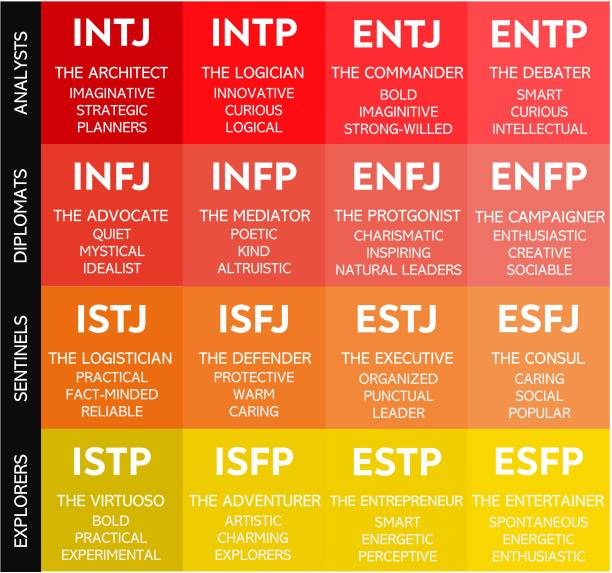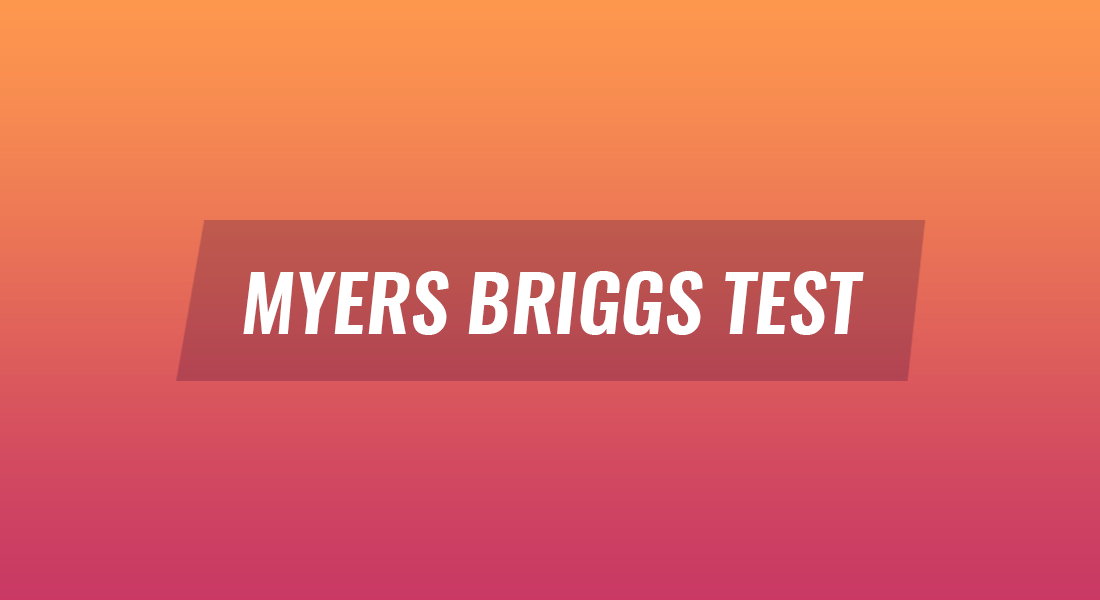Myers Briggs Personality Test – You might have heard people talking about being introverted or extroverted. It is part of the personality of a person. We all think differently and behave differently compared to each other, and it is our personality that makes us different.
There are a lot of ways to test the personality of a person, and Myers Briggs Personality Test is one of them. Recently, it became popular when multinational companies started taking personality tests on most of their employees.
As per one data point released by a prestigious organization, more than two million people take Myers Briggs Personality Test each year in the United States. It is also our main topic for today’s blog. We will talk about everything about the test so let’s get started.
What is Myers Briggs Personality Test?
Myers-Briggs Personality Test, Also known as the Myers Briggs type indicator, is a self-reported questionnaire that can help you understand the personality of the person taking the test.
The text can help you understand the personality of a person taking tests using four specific dichotomies. It includes introversion and extroversion, sensing and intuition, thinking and feeling, judging and perceiving.
The test was first developed back in the 1940s by a person named Isabel Briggs Myers. She was accompanied by her mother, Katherine Cook Briggs. The test is based on the theories proposed by psychologist Carl Jung.
The test was developed to give clarity and understanding of the person’s personality. The mother-daughter duo first tested friends and family to collect the initial data.
More than 5000 medical students across 45 medical schools back in 1951 used Myers Briggs Personality Test to determine which area of medicine they should specialize in. Soon after that, the test became a big hit, and it has been used to help people both in and outside the workplace to learn more about their personalities.
In total, there are 16 personalities in the Myers-Briggs Personality Test, And the old drive from 4 pairs.

How do they take the Myers-Briggs Personality Test?
Myers-Briggs Personality Test results in four Personality codes. The personality code is generated based on the answers you are going to give in the test. The whole test will be based on four pairs.
Introversion and Extroversion
Introversion and Extroversion scales help anyone to understand where the person puts their attention and how they get the energy.
Extravert’s personalities are commonly displayed as:
- Feeling comfortable in groups.
- Being popular or having a large friend group.
- Not thinking something over before taking action.
Introvert’s personalities are commonly displayed as follows:
- Avoiding action by overthinking and/or contemplating.
- Feeling removed from the outside world.
Sensing and Intuition
The second important scale to understand the personality of a person is sensing and intuition. This scale allowed us to understand how the other person takes in information from the world around us.
Sensing personalities are commonly displayed as:
- Remembering accurate snapshots of events.
- Being a fact-based problem solver.
- A preference for a realistic “bottom line” approach.
- Valuing experience more than words and/or symbols.
- Overlooking potential possibilities due to overanalyzing facts.
Intuition personalities are commonly displayed as:
- Reading between the lines.
- Interest in new, different experiences.
- Bouncing between possible scenarios.
- Valuing impressions, metaphors, and symbols more than lived experience.
- Difficulty bringing possibilities to reality.
Thinking and feeling
Thinking and feeling skills allow us to understand whether a person focuses more on information or patrons and interpretation.
Thinking personalities are commonly displayed as:
- Enjoying fields where logic is key.
- Noticing errors or inconsistencies.
- Searching for logical solutions to problems.
- A desire to be fair and make decisions based on logic.
- Believing in direct truth-telling.
- Not always accounting for people’s emotions or experiences.
- Being task-oriented and appearing indifferent or uncaring.
Feeling personalities are commonly displayed as:
- Enjoying fields involving people or communications.
- Wanting harmony and becoming nervous around conflict.
- Having concern for others.
- Being compassionate and making emotion-based decisions.
- Valuing people’s emotions and believing in delivering news with tact.
- Not always communicating difficult truths directly.
- Appearing indirect, idealistic, or emotional.
Judging and Perceiving
The final pair to understand the personality of a person is judging and perceiving. It is a perfect scale to understand whether a person prefers more structure in their life or they are open-minded with a flexible lifestyle.
judging personalities commonly display as:
- Enjoy when things are decided.
- Being task-oriented.
- Enjoying to-do lists.
- Having a “work before play” attitude.
- Planning to avoid rushing or procrastination.
- Being highly goal-oriented but sometimes missing. Information due to narrow focus.
Perceiving personalities commonly display as:
- Being open-minded.
- Being casual or not one to make plans.
- Mixing work with play.
- Being productive in bursts of energy.
- Receiving added stimulation from pressure or deadlines.
- Having difficulty making decisions.
How to take Myers Briggs personality test?
Now, you are probably wondering where you can take the Myers-Briggs personality test. There are two ways to do it. Either you can make an appointment at the official website of Myers Briggs personality test, or you can schedule an appointment with an MBTI certified practitioner.
If you want to go with the official website, then you can click on the button given above, which will directly take you to the official website of MBTI.
This is not a free test, and you have to pay $50. Also include a downloadable report, an interactive learning session, and a lot of tips and tools to improve your personality.
If you do not want to go with the official website, you can go with any other third party. The third-party test might be available free of cost, but we suggest everyone go with the paid version.
Problems with Myers Briggs Personality Test
At first look, you might feel like Myers Briggs personality test is a very good test, and everyone should take it.
But, there are a lot of people who do not like this test, and they believe it is just a waste of time and cannot tell about their personality at all.
Organizational psychiatrists at the University of Pennsylvania believe that Myers Briggs Personality Test is completely meaningless as you do not tell about how happy a person will be in a situation or how well a person is going to perform at a job.
Adam Grant from the University of Pennsylvania further claimed that a question paper based on 93 questions that can have 16 outcomes is not able to categorize every person in the world.
People are taking this test to determine which career choice can be better for them, and it is nothing but a waste of time.
Unproven theories
A lot of psychiatrists believe that you should never rely on Myers Briggs Personality Test. The test is based on unproven theories.
Myers-Briggs Personality Test was developed back in the 1940s, and the base of the test was the untested theories of Carl Jung. Even the publisher of theories, Carl Jung, said in an interview that these personality types are just rough tendencies he had observed over some time.
A huge number of analysts have already proven that the Myers-Briggs Personality Test Is ineffective at predicting people’s success in a huge number of jobs. A person cannot rely on a test to select a career.
Apart from that, there is one very interesting data point that can completely throw the test into the garbage. As per that data point, more than 50% of people who take the test twice might get different results.
Inconsistent and inaccurate results
The consistency of results is a very big issue with the Myers-Briggs Personality Test. As we have already mentioned, more than 50% of people who take tests arrive at different results when they take a test for the second time.
It is not like the result might change after a few years, but researchers have found that people can come up with different results even with a gap of five weeks.
If the person taking the test is in a good mood, then they might come up with different results as compared to a test where the mood was not good.
Takeaways
Myers-Briggs personality test is among the most popular personality tests in the world. A huge number of multinational companies use this test to determine their candidates.
As per the experts, the test can give you an understanding of the personality of a person. At the same time, it can also allow you to understand their thinking process and how they are going to make decisions under certain situations.
There are eight pillars of the test available in four pairs such as introversion and extroversion, sensing and intuition, thinking and feeling, and judging and perceiving.
Why do experts not believe in Myers Briggs personality test?
Even though the Myers-Briggs personality test is among the most popular personality tests in the world, a huge number of experts do not believe in it. The problem with Myers Briggs personality test is that it can come up with different results if you take the test twice in a few weeks. The test is heavily influenced by the current mental and financial situation of a person.
